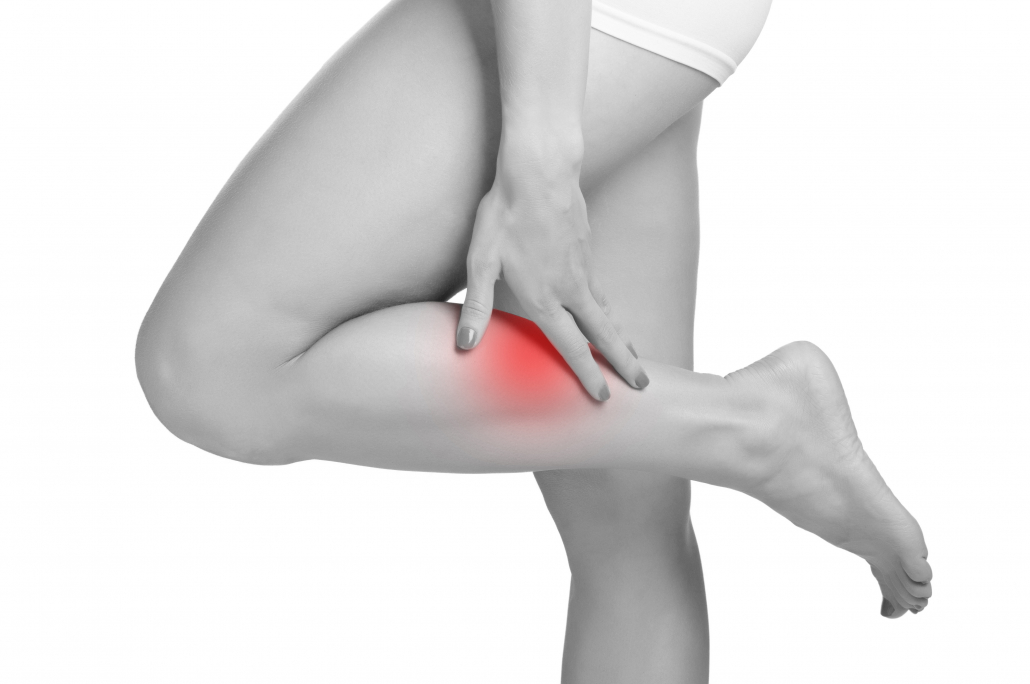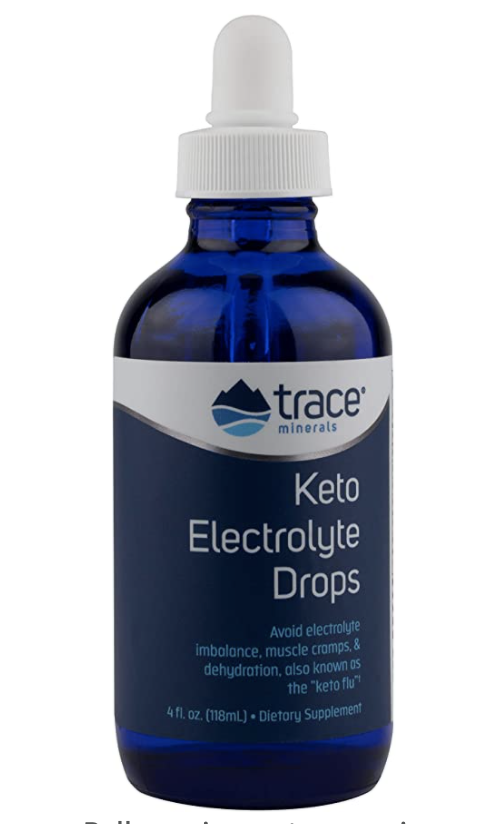We include products in articles we think are useful for our readers. If you buy products or services through links on our website, we may earn a small commission.
Leg and Muscle Cramps on Keto: Tips to Treat and Prevent

Table of Contents
Leg and muscle cramps on keto are a surprisingly common symptom during the first couple of weeks when transitioning to a keto diet. Thankfully, there’s no need for alarm.
In most cases, leg and muscle cramps on keto can be avoided. In this article, we’ll look at the primary causes of muscle cramps on keto, before looking at top tips and tricks to avoid them.
Causes of Leg and Muscle Cramps on Keto
Most cases of leg and muscle cramps on keto are caused by some combination of the factors listed below:
- Loss of electrolytes
- Loss of water
- Imbalanced pH
Let’s take a closer look at each and how to remedy the issue.
Loss of Electrolytes
Your transition into ketosis may be marked by a loss of electrolytes.
The keto diet is thought to deplete electrolytes for two main reasons: One, most keto-friendly foods are low in electrolytes — particularly magnesium and potassium. Two, the low insulin levels keto promotes can cause the electrolytes you do eat to be excreted faster. [3]
Chronically low electrolyte levels are marked by cramps, lightheadedness, and even heart palpitations. [2] These are all basically symptoms of the cellular short-circuiting that occurs when not enough electrolytes are present to retain proper electrical conductivity.
There are six major electrolytes, and in its initial stages keto may deplete many of them: [1]
- Sodium
- Calcium
- Chloride
- Potassium
- Magnesium
- Phosphorus
Loss of Water
Transitioning to keto is synonymous with flushing, or what’s known as the keto whoosh.
This happens when your body uses up all the glucose in your blood and turn to the glycogen stored in your muscle tissue.
Each gram of glycogen stored in your muscles and liver is connected to four grams of extracellular water which can both reduce water weight in your body, but also make you dehydrated [4]
Imbalanced pH
Nearly all types of keto including Mediterranean, carnivore, and pescatarian versions rely on animal foods for the bulk of their calories. While these animal foods are extremely nutritious, they have one potential problem — their pH is acidic. [5]
Eating an all-animal keto diet may raise some people’s chances of developing metabolic acidosis which can lead to muscle cramps.
How to Prevent and Treat Leg and Muscle Cramps on Keto
With a well-formulated keto diet, it’s fairly easy to take the steps needed for preventing muscle and leg cramps. Below are a few proven strategies you can try today.
Consume High-Potassium Foods
Though common keto meats are fairly low in potassium, there is a surprisingly wide variety of keto foods rich in potassium, especially fatty keto fish and keto seafood, and some keto-friendly vegetables. These include:
- Clams: 1200 mg per 20 small clams
- Avocados: 975 mg per 1 avocado
- Pumpkin seeds: 919 mg per 100 grams
- Pork Chop: 690 mg per 1 (219 gram) pork chop
- Halibut: 530 mg per 3 oz.
- Pacific rockfish: 470 mg per 3 oz.
- Atlantic Mackerel: 520 per 100 grams
- Brussel sprouts: 389 mg per 100 grams
- Mushrooms: 318 grams per 100 grams
- Zucchini Squash: 261 mg per 100 grams
Magnesium-rich foods
Of all the electrolytes to include on a keto diet, magnesium might be the most important.
Magnesium is critical for maintaining normal cellular functions.7 In addition, magnesium plays an important role in preventing and/or treating diabetes, osteoporosis, bronchial asthma, preeclampsia, migraine, and cardiovascular diseases. 8
Magnesium-rich foods that will help you reach your 400 mg RDA include:
- Pumpkin seeds: 262mg per 100 grams
- Pecans: 121 mg per 100 grams
- Swiss chard 86 mg per 100 grams
- Mackerel: 60 mg per 100 grams
- Avocado: 58 mg per avocado
- Oysters: 58 mg per 100 grams fried oysters
- Prawns: 51 mg per 100 grams
- Skipjack tuna: 44 mg per 100 grams
Adequate Hydration
You may find yourself needing to drink more fluids on a keto diet — sometimes much more. Dr. Kiltz often advises people to drink 2-2.5 liters of water/day during their transition into ketosis. [8]
Be sure to keep close tabs on your body, too: telltale signs of dehydration include muscle cramping, headaches, constipation, and dark yellow urine. [8]
Proper Salt Intake
Equally important when hydrating is maintaining proper salt intake. To rebalance electrolytes many keto-aware doctors recommend 12 grams (2 tsp) of salt per day in the first few days of adapting to keto.
Once your body adapts to ketosis, the recommended salt intake is 5 grams (1 tsp) daily to avoid side effects including muscle and leg cramps, fatigue, keto constipation, and keto diarrhea. [13]
Supplemental Electrolytes
If you wish to cover all electrolyte-related bases, a dedicated electrolyte supplement could be a great choice. Look for one that contains balanced amounts of potassium and magnesium. [9]
We recommend Trace Minerals Keto Electrolyte Drops. They offer the most concentrated amounts of essential electrolytes without any fillers or additives.
pH buffers
Keto dieters can run into problems with acidity (low pH). This was first discovered by doctors administering ketogenic diets to children suffering from epilepsy. 10
Eventually, doctors of that era found a solution, a ‘buffering’ liquid they called Polycitra K. This drink raised pH enough to bring down kidney stone occurrence by a factor of nearly. [11]
Supplementation with plain old potassium citrate may cause a similar improvement, as may drinking plenty of water and eating high alkaline keto-friendly vegetables. Even baking soda is known for its ability to temporarily boost pH.[12]
Reduce Alcohol Consumption
Alcohol is a diuretic, meaning it can cause excess urination and make pre-existing dehydration even worse. Stay away from alcohol entirely if you’re experiencing muscle cramps or other aspects of keto flu. [13]
For more guidelines and tips regarding alcohol on keto click here.
Gentle exercise
Last but not least, gentle exercise during your transition into ketosis can reduce muscle and leg cramps. The key is striking a balance between a movement practice that increases blood flow, yet not so intense as to result in lactic acid buildup.
Keep intensity levels in check by making sure you can breathe through your mouth throughout the entirety of your workout — if you can, you’re in fat-burning mode. Stretching, walking, and yoga are all great choices. [14]
Leg and Muscle Cramps on Keto: The Takeaway
Though leg and muscle cramps on keto are relatively common, the good news is that with a few easy to follow strategies they can be avoided and remedied.
- Salt your food liberally
- Drink plenty of water. Shoot for either 2-2.5 liters/day or half of your body weight in ounces, whichever is more.
- Consume keto foods high in magnesium and potassium.
- Supplement with electrolytes, particularly the powerful muscle relaxant magnesium.
- Exercise moderately





















